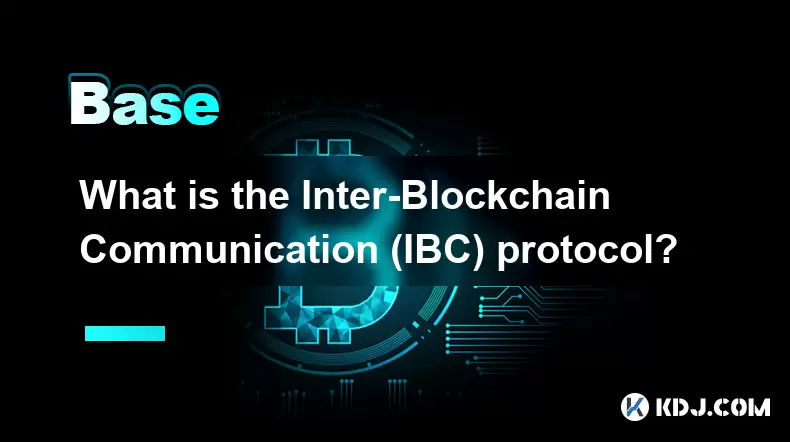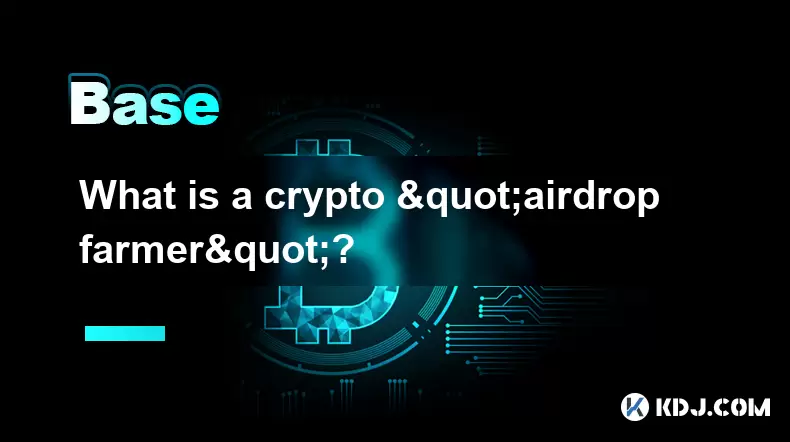-
 Bitcoin
Bitcoin $119300
1.07% -
 Ethereum
Ethereum $3730
3.87% -
 XRP
XRP $3.235
0.29% -
 Tether USDt
Tether USDt $1.000
0.00% -
 BNB
BNB $783.5
1.88% -
 Solana
Solana $188.7
0.25% -
 USDC
USDC $0.0000
-0.01% -
 Dogecoin
Dogecoin $0.2399
-0.44% -
 TRON
TRON $0.3157
2.37% -
 Cardano
Cardano $0.8254
1.94% -
 Hyperliquid
Hyperliquid $42.83
0.14% -
 Stellar
Stellar $0.4372
3.21% -
 Sui
Sui $3.859
4.91% -
 Chainlink
Chainlink $18.53
3.53% -
 Hedera
Hedera $0.2464
0.01% -
 Bitcoin Cash
Bitcoin Cash $519.8
2.46% -
 Avalanche
Avalanche $24.24
2.17% -
 Litecoin
Litecoin $113.7
0.73% -
 UNUS SED LEO
UNUS SED LEO $8.990
0.30% -
 Shiba Inu
Shiba Inu $0.00001390
0.21% -
 Toncoin
Toncoin $3.188
1.49% -
 Ethena USDe
Ethena USDe $1.001
0.02% -
 Polkadot
Polkadot $4.090
-0.91% -
 Uniswap
Uniswap $10.40
4.08% -
 Monero
Monero $326.6
3.12% -
 Bitget Token
Bitget Token $4.627
-0.42% -
 Pepe
Pepe $0.00001281
0.76% -
 Dai
Dai $1.000
0.01% -
 Aave
Aave $291.6
0.98% -
 Cronos
Cronos $0.1269
7.26%
What is the Inter-Blockchain Communication (IBC) protocol?
The IBC protocol enables secure, trustless cross-chain communication, allowing blockchains to exchange assets and data without central intermediaries.
Jul 23, 2025 at 08:35 pm

Understanding the Basics of the IBC Protocol
The Inter-Blockchain Communication (IBC) protocol is a standardized framework that enables different blockchain networks to communicate and exchange data securely. Unlike traditional systems where blockchains operate in isolation, IBC provides a cross-chain interoperability solution that allows assets and information to move seamlessly between compatible chains. This innovation is particularly vital in a multi-chain ecosystem, where users and developers seek to leverage the unique features of various networks without being confined to a single platform.
IBC functions through a light client mechanism, where each participating chain maintains a minimal representation of the other chain's state. This ensures that communication is trustless and secure, without requiring full node validation of the counterparty chain. The protocol was initially developed by the Cosmos network and has since been adopted by several other blockchain projects that prioritize interoperability.
How IBC Enables Cross-Chain Transactions
The core functionality of IBC lies in its ability to facilitate cross-chain transactions, including the transfer of tokens and arbitrary data. When a user initiates a token transfer from one chain to another via IBC, the source chain locks the tokens and generates a proof of locking. This proof is then relayed to the destination chain, which verifies the proof using its light client and mints a representative token on the receiving chain.
- A relayer node is responsible for carrying the proof between chains.
- The destination chain confirms the proof against its stored headers.
- Once validated, the destination chain executes the corresponding action, such as minting tokens or executing a smart contract.
This process ensures that no central authority is required, and the security of the transaction depends solely on the integrity of the two chains involved. The finality of the transaction is achieved once both chains confirm the action, and the process is entirely automated and permissionless.
Technical Architecture of the IBC Protocol
The technical structure of IBC is divided into two primary layers: the transport layer and the application layer. These layers are modular and can be implemented independently, allowing developers to customize the protocol for specific use cases.
- The transport layer (IBC/TAO) handles the foundational aspects of communication, including connection establishment, channel creation, and packet transmission.
- The application layer defines how data is interpreted and processed once it reaches the destination chain. This includes token transfers, smart contract calls, and governance proposals.
Each IBC message is packaged as a packet, which contains metadata and the actual payload. Packets are sent through channels, which are logical pathways established between two modules on different chains. These modules, known as IBC modules, are responsible for processing incoming and outgoing messages and ensuring that data is handled according to predefined rules.
Use Cases of IBC in the Blockchain Ecosystem
The practical applications of IBC extend beyond simple token transfers. Developers have leveraged IBC to build a wide range of decentralized applications that require cross-chain interaction.
- Decentralized exchanges (DEXs) use IBC to enable trading across different blockchains without the need for centralized intermediaries.
- Cross-chain lending protocols allow users to deposit assets on one chain and borrow on another, enhancing liquidity and capital efficiency.
- Governance systems can use IBC to synchronize voting outcomes between chains, enabling coordinated decision-making across ecosystems.
These use cases demonstrate how IBC fosters a more interconnected and efficient blockchain landscape, allowing users to access services and assets across multiple chains without compromising security or decentralization.
Security Considerations in IBC Implementation
While IBC offers robust interoperability, its implementation must be carefully designed to avoid security vulnerabilities. Since IBC relies on light clients to verify the state of remote chains, any compromise in the light client logic could lead to catastrophic consequences.
- Chains must ensure that their light clients are correctly implemented and resistant to known attacks such as header forgery or timestamp manipulation.
- Relayer nodes must be incentivized to act honestly, and mechanisms should be in place to prevent malicious relaying.
- Chains should implement rate-limiting and circuit breaker mechanisms to halt IBC communication in case of suspicious activity.
Furthermore, developers must audit their IBC modules thoroughly to ensure that malicious data packets cannot exploit vulnerabilities in the application logic. Proper security measures are essential to maintain the trustless nature of cross-chain communication and protect user assets.
Integration of IBC with Smart Contracts
The integration of IBC with smart contracts allows developers to build complex decentralized applications that span multiple chains. By embedding IBC logic into smart contracts, developers can create inter-chain oracles, cross-chain NFT transfers, and multi-chain governance systems.
- Smart contracts can listen for incoming IBC packets and trigger specific actions based on the data received.
- Developers can build custom IBC modules that interact with smart contracts, enabling novel use cases such as cross-chain DeFi strategies.
- IBC packets can carry arbitrary data payloads, allowing smart contracts to execute logic based on events occurring on remote chains.
This integration significantly enhances the capabilities of smart contracts, making them more versatile and powerful in a multi-chain environment. Developers must, however, ensure that the smart contract logic is secure and that all incoming data is properly validated before execution.
Frequently Asked Questions (FAQs)
Q: Can IBC be used for non-token data transfers?
Yes, IBC supports the transfer of arbitrary data packets, not just tokens. This allows for cross-chain communication of smart contract events, governance proposals, and other structured data types.
Q: Is IBC limited to Cosmos-based blockchains?
While IBC was initially developed for the Cosmos ecosystem, it is a generic protocol and can be implemented by any blockchain that supports its specifications. Several non-Cosmos chains have begun integrating IBC-compatible modules.
Q: What happens if one of the connected chains undergoes a reorg?
If a chain experiences a reorganization, the IBC protocol includes consensus verification mechanisms to detect and reject invalid headers. This ensures that only valid chain states are accepted by the light client.
Q: Are there any gas or transaction fees associated with IBC transfers?
Yes, users must pay gas fees on both the source and destination chains for IBC transactions. These fees are used to compensate validators for processing and verifying cross-chain communication.
Disclaimer:info@kdj.com
The information provided is not trading advice. kdj.com does not assume any responsibility for any investments made based on the information provided in this article. Cryptocurrencies are highly volatile and it is highly recommended that you invest with caution after thorough research!
If you believe that the content used on this website infringes your copyright, please contact us immediately (info@kdj.com) and we will delete it promptly.
- Bitcoin, Jim Cramer, and the US Deficit: A Wall Street Story
- 2025-07-25 10:30:11
- TGEs, Scalability & Privacy Tech: Decoding the Future of Blockchain
- 2025-07-25 10:30:11
- TRON, Crypto Payroll, and Stablecoins: A New York Minute on the Future of Finance
- 2025-07-25 08:30:11
- WazirX, Revote, and Crypto Unlock: A New York Minute on the Latest Developments
- 2025-07-25 06:50:11
- Hong Kong Stablecoin Regulation: Navigating the Hype and Hurdles
- 2025-07-25 08:30:11
- Bitcoin LTHs, CDD Ratio, and Distribution: What's the Deal?
- 2025-07-25 08:50:12
Related knowledge

What is the difference between CeFi and DeFi?
Jul 22,2025 at 12:28am
Understanding CeFi and DeFiIn the world of cryptocurrency, CeFi (Centralized Finance) and DeFi (Decentralized Finance) represent two distinct financia...

How to qualify for potential crypto airdrops?
Jul 23,2025 at 06:49am
Understanding What Crypto Airdrops AreCrypto airdrops refer to the distribution of free tokens or coins to a large number of wallet addresses, often u...

What is a crypto "airdrop farmer"?
Jul 24,2025 at 10:22pm
Understanding the Role of a Crypto 'Airdrop Farmer'A crypto 'airdrop farmer' refers to an individual who actively participates in cryptocurrency airdr...

What is the difference between a sidechain and a Layer 2?
Jul 20,2025 at 11:35pm
Understanding the Concept of SidechainsA sidechain is a separate blockchain that runs parallel to the main blockchain, typically the mainnet of a cryp...

What is the Inter-Blockchain Communication Protocol (IBC)?
Jul 19,2025 at 10:43am
Understanding the Inter-Blockchain Communication Protocol (IBC)The Inter-Blockchain Communication Protocol (IBC) is a cross-chain communication protoc...

How does sharding improve scalability?
Jul 20,2025 at 01:21am
Understanding Sharding in BlockchainSharding is a database partitioning technique that is increasingly being adopted in blockchain technology to enhan...

What is the difference between CeFi and DeFi?
Jul 22,2025 at 12:28am
Understanding CeFi and DeFiIn the world of cryptocurrency, CeFi (Centralized Finance) and DeFi (Decentralized Finance) represent two distinct financia...

How to qualify for potential crypto airdrops?
Jul 23,2025 at 06:49am
Understanding What Crypto Airdrops AreCrypto airdrops refer to the distribution of free tokens or coins to a large number of wallet addresses, often u...

What is a crypto "airdrop farmer"?
Jul 24,2025 at 10:22pm
Understanding the Role of a Crypto 'Airdrop Farmer'A crypto 'airdrop farmer' refers to an individual who actively participates in cryptocurrency airdr...

What is the difference between a sidechain and a Layer 2?
Jul 20,2025 at 11:35pm
Understanding the Concept of SidechainsA sidechain is a separate blockchain that runs parallel to the main blockchain, typically the mainnet of a cryp...

What is the Inter-Blockchain Communication Protocol (IBC)?
Jul 19,2025 at 10:43am
Understanding the Inter-Blockchain Communication Protocol (IBC)The Inter-Blockchain Communication Protocol (IBC) is a cross-chain communication protoc...

How does sharding improve scalability?
Jul 20,2025 at 01:21am
Understanding Sharding in BlockchainSharding is a database partitioning technique that is increasingly being adopted in blockchain technology to enhan...
See all articles

























































































